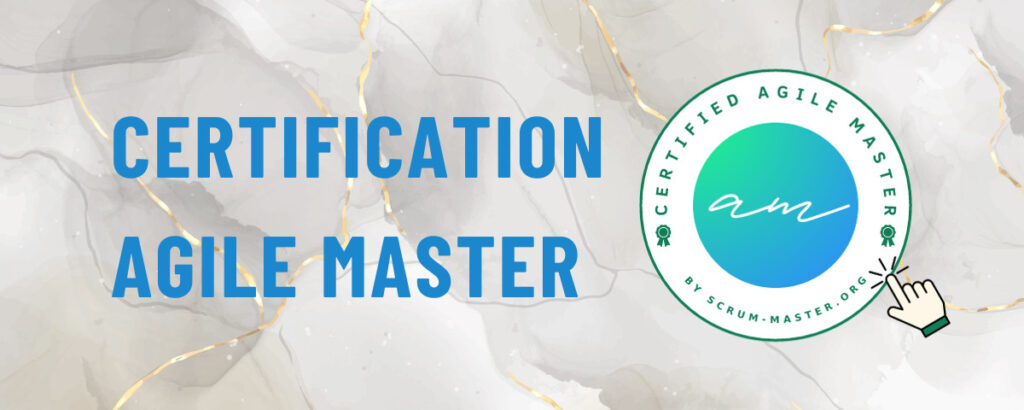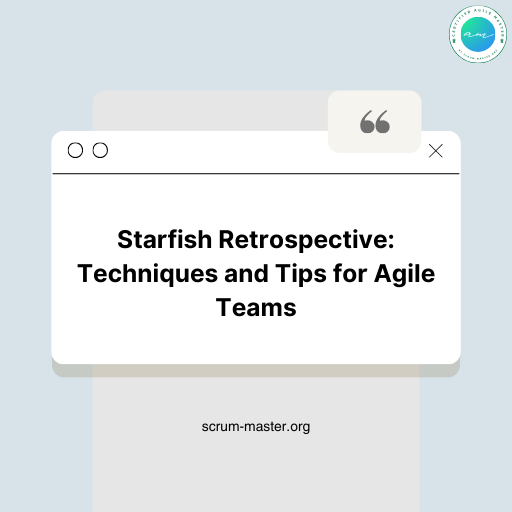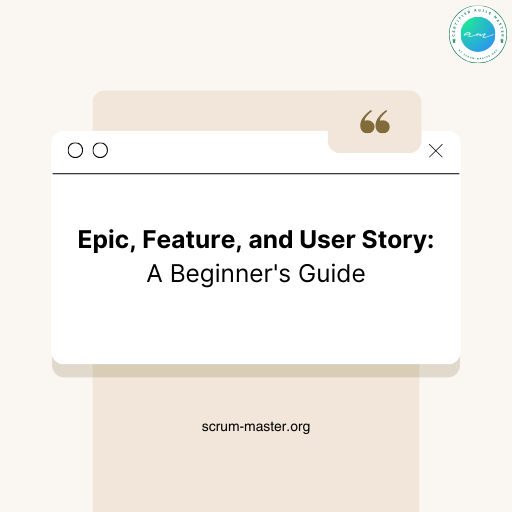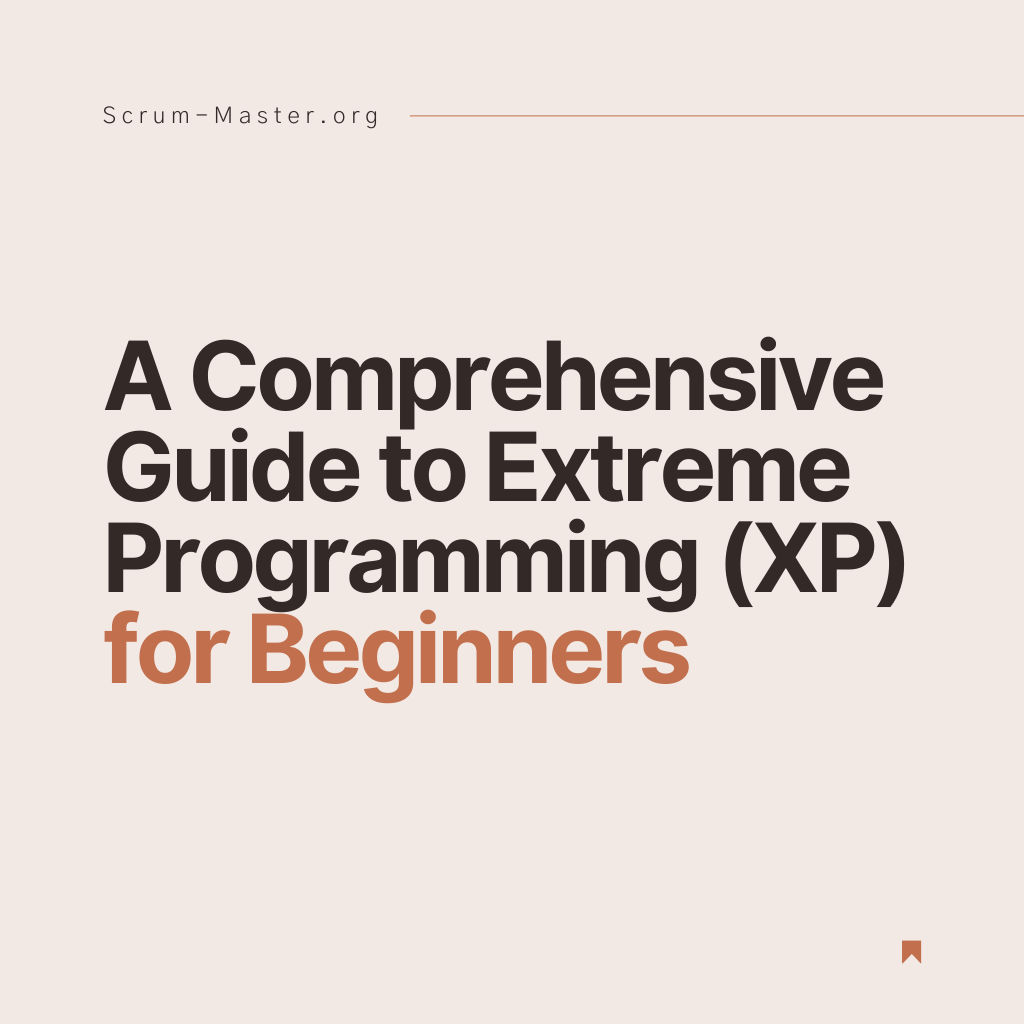In the ever-evolving field of product management, the Product Manager (PM) plays a central role in implementing agile principles at scale, especially within organizations that embrace the Scaled Agile Framework (SAFe©).
The PM’s responsibilities span strategy, development, and product delivery, making them the linchpin for ensuring team alignment with the product vision and driving continuous value creation.
This article explores the day-to-day experiences of an agile PM, shedding light on the intricacies and dynamics of this multifaceted role within the context of SAFe.
Index
- 1 Promoting a shared vision
- 2 Understanding customer and company needs
- 3 Build and maintain product roadmaps
- 4 Maintenance of the ART Backlog by the Product Manager
- 5 Leading SAFe PI Planning
- 6 Validate functionalities
- 7 How does the SAFe Product Manger work with the Product Owners?
- 8 Internal and External Customers in SAFe Major Solutions
- 9 Example of a Product Manager's Typical Week in the SAFe Framework
- 10 Average salary for a Product Manager in France
- 11 Conclusion
- 12 Our reading tips
Promoting a shared vision
In SAFe 6.0, the Product Manager has the pivotal task of defining and communicating the product vision. This vision needs to align with the company’s strategic objectives and translate customer needs into tangible product features. It acts as a guiding principle for the Agile Release Train (ART), ensuring that all teams work towards a common goal.
With the shift to SAFe 6.0, the Product Manager must ensure that the vision is clear, actionable, and shared at all levels of the organization. This involves establishing an open dialogue with teams to ensure that the vision is not only understood but also embraced by all. Consistency between the long-term vision and short-term objectives is crucial to maintain momentum and team commitment.
The Product Manager’s role also extends to adjusting the vision in line with ongoing feedback from customers and development teams. By remaining agile and responsive, the Product Manager ensures that the product remains competitive and relevant to the market.
In summary, in SAFe 6.0, promoting a shared vision is less about captivating stories and more about clear communication and pragmatic management of product objectives. It is on this solid foundation that the Product Manager guides ART towards sustained value creation in line with corporate strategy.
Understanding customer and company needs
In SAFe 6.0, the PM plays a key role in validating the functionalities developed by ART. This stage ensures that each feature meets the acceptance criteria and delivers the expected value to users.
At the end of each Sprint, the PM evaluates features during System Demos, gathering feedback from stakeholders to adjust priorities and the product roadmap.
This approach ensures that the product remains aligned with the company’s overall vision and strategic objectives, while effectively meeting market and customer needs.
Build and maintain product roadmaps
The Product Manager, armed with the product vision and precisely defined requirements, is responsible for building and maintaining product roadmaps in SAFe. These roadmaps are strategic tools that map out the path of product development over the short and long term. They not only indicate upcoming features and the broad outlines of future releases, but also serve as a means of communicating the expectations of stakeholders and teams.
Updating roadmaps is a balancing act between vision and operational reality, requiring continuous updating to reflect changes in market priorities, customer feedback and business constraints.
The Product Manager in SAFe needs to be both a visionary and a realist, able to adjust plans to adapt to changing circumstances while staying focused on long-term objectives.
Product roadmaps thus become living artifacts, essential for planning IPs (Planning Intervals) and monitoring progress towards strategic objectives. Their precise management contributes directly to ART’s agility and responsiveness to a constantly changing environment.
Maintenance of the ART Backlog by the Product Manager
In the Scaled Agile Framework, management of the ART (Agile Release Train) backlog by the Product Manager is essential to ensure smooth, efficient delivery of features. The Product Manager plays a crucial role in prioritizing backlog items to align development efforts with the company’s strategic objectives and market needs.
This responsibility includes working closely with Product Owners to identify the most relevant features and epics. The use of prioritization techniques, such as WSJF (Weighted Shortest Job First), helps to determine which features will bring the most value and should be developed first.
Continuous updating and refinement of the ART backlog is vital to ensure that ongoing initiatives reflect changes in business strategy and customer feedback. This dynamic process enables the Product Manager to react quickly to changes in the environment, ensuring that ART remains focused on the tasks that bring the most value.
Leading SAFe PI Planning
The PM plays an essential role in directing PI Planning (Planning Interval) in SAFe. This activity involves preparing and presenting the product vision and key functionalities to the entire ART team at the start of the IP. The Product Manager coordinates with Product Owners, System Architects, and other key roles to ensure that planning reflects both long-term strategy and immediate delivery objectives.
During these planning sessions, the PM facilitates discussion and negotiation of objectives and deliverables between the different teams. He is responsible for clarifying priorities, resolving ambiguities and promoting strong alignment between teams. This also includes taking into account potential dependencies and risks, ensuring that the plan is realistic and achievable.
The PM’s impact during these PI Planning sessions is crucial to ensure that each ART team understands and commits to the Planning Interval objectives, and to align collective efforts with the strategic product vision.
Validate functionalities
Within the framework of agility at scale, the PM has a crucial responsibility in validating the functionalities developed by the ART. This validation ensures that each feature corresponds to the pre-defined acceptance criteria, while providing the expected added value for users. At the end of each Sprint, the PM evaluates the functionalities presented during the ART System Demo, gathering the feedback needed to refine priorities and adjust the product roadmap.
This process keeps the product aligned with the company’s strategic vision, while ensuring that it responds effectively to changing market and customer needs.
How does the SAFe Product Manger work with the Product Owners?
In Scaled Agile, collaboration between the Product Manager (PM) and the Product Owners (POs) is crucial. Here are the key points of this interaction:
Product Vision Alignment :
- The PM communicates the overall vision of the product to the POs.
- The POs ensure that this vision is integrated into their teams’ backlogs.
Setting priorities :
- Together, PMs and POs define functionality priorities, aligning customer needs with the company’s strategic objectives.
- The PM guides the POs in understanding the larger-scale impacts of features on the product.
Communication and Coordination :
- The Product Manager and Product Owners hold regular meetings to maintain fluid communication.
- They coordinate efforts to ensure consistent implementation of the product strategy across ART.
Reviewing and adjusting the Backlog :
- The PM and POs jointly revise the backlog to adapt to market changes and customer feedback.
- They adjust priorities according to new information and emerging requirements.
This collaboration is essential to ensure that the final product accurately reflects the strategic vision, while effectively meeting operational requirements and customer needs.

Internal and External Customers in SAFe Major Solutions
In SAFe, the management of internal and external customers is a key element for Product Managers (PMs), especially when it comes to large solutions such as those used in banking services.
Internal customers :
- Internal customers are those within the company who benefit directly from the solutions developed. For example, a bank’s underwriting managers are internal customers of the credit rating solution developed by the IT department.
- PMs need to understand and integrate the needs of these internal customers to ensure that the solutions developed effectively support internal business processes.
External customers :
- External customers are end-users or companies who purchase, license or use solutions for their own benefit.
- In the banking sector, external customers can use the solutions to submit loan applications and make repayments. These interactions can be B2B, B2C or B2P.
To illustrate the interaction between solutions and customers at different levels, let’s take the example of mobile banking. PMs from different layers work together to create an integrated solution:
A Cloud PM oversees the cloud infrastructure that supports the platform.
The Digital Platform PM manages the secure electronic banking platform on which the mobile banking application is built.
The Mobile Banking Application PM delivers the final solution to banking customers, ensuring that the application is user-friendly, secure and compliant with regulatory requirements.
In this complex ecosystem, each PM manages a solution that contributes to a finite, rich user experience, where each component is optimized for the immediate benefit of the next customer in the value chain.
Example of a Product Manager's Typical Week in the SAFe Framework
Monday: Start-up and Synchronization
- Goal review: Start the day with a review of goals and priorities. This includes a quick check of e-mails and messages to identify emergencies that could affect the day’s agenda.
- User Data Analysis: Examine product performance metrics and user feedback to assess the impact of recently delivered features.
- PO Sync: Participate in or lead the synchronization meeting with Product Owners to discuss current priorities and obstacles.
Tuesday: Customer Commitment and Team Support
- Customer engagement: Schedule meetings with customers to discuss their needs and gather direct feedback on recent features.
- ART Backlog Refinement Workshop: Refine priorities with POs for the next PI (Planning Interval).
- Team Support: Offer ongoing support to teams, helping to clarify requirements and solve problems.
Wednesday: Preparing the System Demo and Collaboration
- Preparing the System Demo: Select the features to be presented, review details and expected results.
- PM/PO Community Meeting: Sharing insights, solving common challenges and strengthening cohesion.
- Team Backlog Refinement Workshop: take part in a team backlog refinement workshop to support the team Product Owner in explaining a future user requirement.
Thursday: Finalization and Strategic Planning
- Final checks for the System Demo: Check with each PO that all functionalities are ready to be demonstrated. and fine-tuning the final details to be added to the communication materials for the System Demo.
- Roadmap Update: Spend time updating the product roadmap, incorporating recent insights and anticipating future iterations.
- Brainstorming session: Organize a brainstorming session with the design team to explore new ideas and features.
Friday: Demonstration and Personal Development
- System Demo: Present progress and gather feedback from stakeholders.
- Team retrospectives: the PM may occasionally take part in Scrum team retrospectives if necessary and if invited by the team.
- Self-study: Set aside time for professional development, whether it’s reading articles on the latest trends or attending webinars on agility at scale or the latest in Product Management.
Each day is structured to optimize the PM’s impact on product development, focusing on the preparation and presentation of results, as well as leadership within the PM/PO community.
Average salary for a Product Manager in France
The remuneration of a Product Manager in France varies significantly according to professional experience. According to the latest LPC study, the average gross annual salary, including fixed salary and variable bonus before tax, is as follows (in k€):
- For beginners (0-1.5 years’ experience): The average salary is €44.9k.
- With 2-4 years’ experience: a PM can expect an average salary of €51.6 k.
- With 5-9 years’ experience: average salary rises to 64.2 k€.
- For experienced PMs (10-15 years): Average salary rises to €70.2k.
- And for those with over 15 years’ experience: the average salary is €73.5k.
These figures underline the potential for salary growth as a function of accumulated experience in the field. It should be noted that these amounts are averages and may vary according to company, business sector, company size, and other factors such as geographical location and the PM’s specific skills.
It’s also important to bear in mind that the remuneration package may include other forms of compensation, such as company shares, benefits in kind, or training opportunities that may be offered for ongoing professional development.
Conclusion
The Product Manager’s role in the SAFe ecosystem is both dynamic and demanding, requiring a combination of strategic, leadership and communication skills. Beyond managing the product vision and steering roadmaps, the SAFe PM must be an agile collaborator, a facilitator between teams and a spokesperson for customer needs, whether internal or external. The typical week we have described illustrates the diversity of responsibilities assumed by PMs and the importance of their role in the success of large-scale agile businesses.
The remuneration of Product Managers in France, as indicated by the recent LPC study, highlights the recognition of the value these professionals bring to organizations. With salaries rising with experience, it’s clear that the Product Manager path is not only rewarding in terms of career development, but also financially.
In conclusion, the Product Manager is at the heart of agile transformation, and continues to be a key player in the achievement of a company’s long-term objectives. The article provides an overview of what it means to be a Product Manager in the modern world of SAFe, while offering a perspective on growth and remuneration opportunities in this field in France. Whether through planning, execution or product development strategy, the PM is a driver of change and a builder of innovative solutions, ready to meet the challenges of today’s agile marketplace.
Our reading tips
The most comprehensive book on the SAFe method by Richard Knaster: SAFe 5.0 Distilled – Achieving Business Agility with the Scaled Agile Framework on Amazon (Kindle or home delivery).










